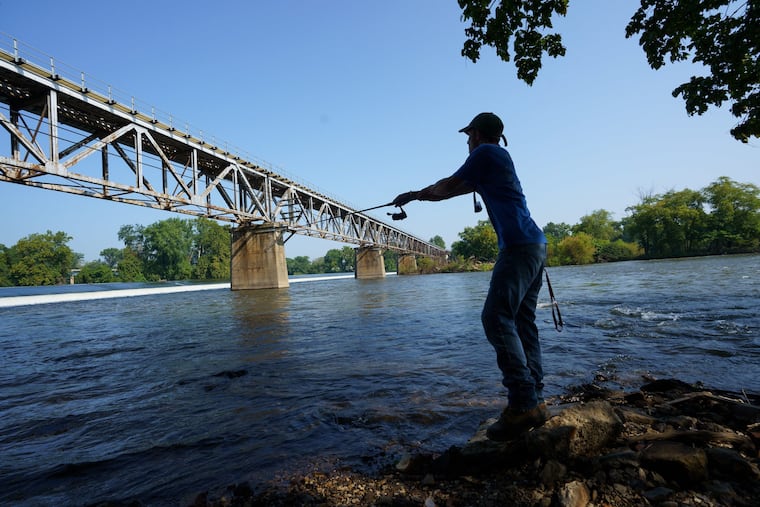Montco plans $30M hydropower station on Schuylkill
The county plans to use most of the energy to power county-owned buildings.

Montgomery County has given a “jump start” to a long dreamed of plan to tap the Schuylkill as a renewable energy source.
Officials applied to the federal government in April for permission to install four turbines at the Norristown Dam that could generate enough electricity to power the equivalent of thousands of homes. However, the county plans to use most of the energy to power county-owned buildings including the 325,000-square-foot, six-story justice center being built in Norristown.
Neil Makhija, vice chair of the Montgomery County Board of Commissioners, said the widespread flooding in Bridgeport during the destructive remnants of Hurricane Ida in 2021 was a wake-up call to move more quickly away from the burning of fossil fuels, which scientists say cause climate change.
“I think our goal locally, regionally, and in the state is to inspire others to seek out opportunities to transition to clean energy within,” Makhija said. “And also we’re finding ways to help educate our residents on the impact of climate locally.”
County commissioners gave a presentation to the public in Bridgeport last week.
A 20-year dream
The Norristown Dam was originally built of timber in the early 1800s as part of a canal system. Montgomery County took ownership of the dam from Peco in 1992. The dam was capped with metal and concrete in 1994. A fish ladder was completed in 2008.
The idea for generating hydroelectric at the dam has been kicked around for two decades but gained solid footing in 2012 when the U.S. Department of Energy’s Oakridge National Laboratory identified the 869-foot-long, 12-foot-high dam as a potential hydroelectric site. Hydropower is considered one of the cheapest forms of renewable energy. An updated study of the dam site in 2023 found that hydropower technology has improved even more since.
In April, county officials, working with consultant Alden Laboratories, applied to the Federal Energy Regulatory Commission (FERC) for a licensing exemption of projects less than 10 megawatts in size. Though the application could take three to five years to process, it would still be faster and less expensive than applying for a traditional permit, officials said.
The county would still study the potential impact on water quality, some species of fish, and wildlife. If FERC grants the exemption, the county would seek a private partner to build the hydropower station.
The application to FERC calls for a project that would produce about 7,300 megawatt hours annually, which would be enough to power 3,000 homes.
The dam, also known as the Swede Street Dam, is near Route 202 and lies 15 miles northwest of Philadelphia. It spans the Schuylkill between Norristown and Bridgeport. A fish ladder was built in 2008 on the Bridgeport side to help migrating fish move upstream.
How it would be built
The county project calls for four submersible turbine generators to be built near the fish ladder. Plans call for about 100 feet of the existing dam to be removed and replaced with a reinforced concrete and steel structure, according to documents filed with FERC. Each turbine would have its own concrete bay. There would be protection to keep trash and logs out. The fish ladder entrance would be extended by about 40 feet.
Electricity generated at the dam could feed into the local grid through an existing pole used to light a parking lot and require the installation of one transformer.
By 2026, the county should be able to decide whether it would still develop the hydropower site. It could be operating by 2028.
Makhija called the FERC application a “jump start” for the project. But he said a key impetus is the federal Inflation Reduction Act and other energy programs that make the hydropower project, estimated at $30 million, much more affordable. The county plans to pursue grants and use other incentives, such as renewable energy credits, to finance it.
“We have found a path where this is essentially viable and economically justified,” Makhija said. “We’re able to move forward in a way that makes sense and help us draw clean energy and reduce carbon emissions.”